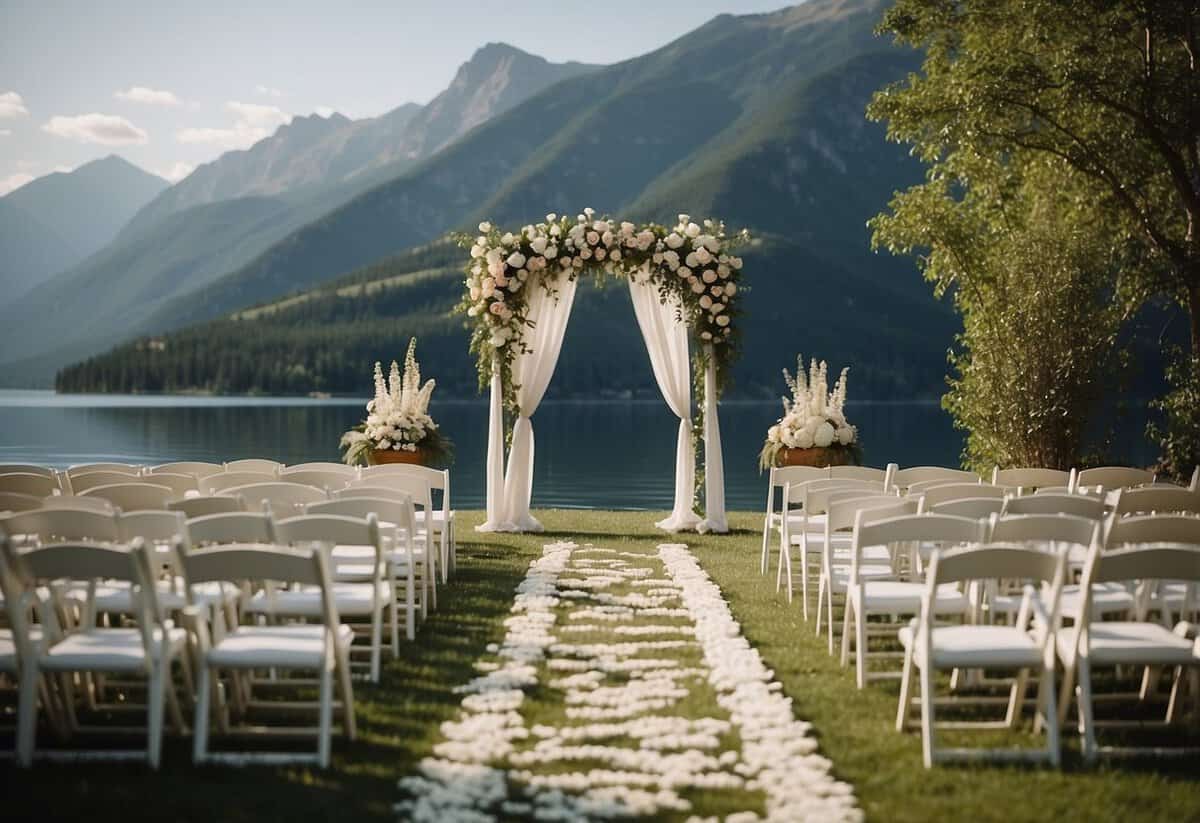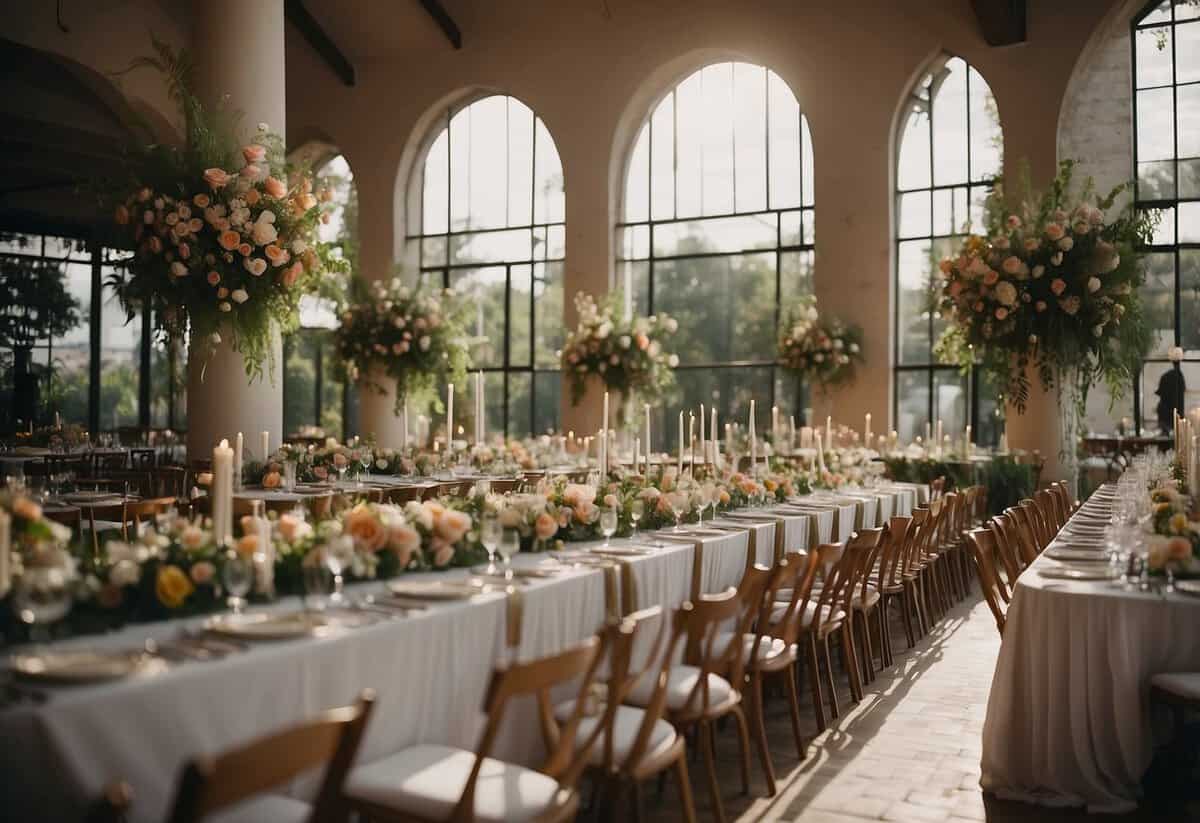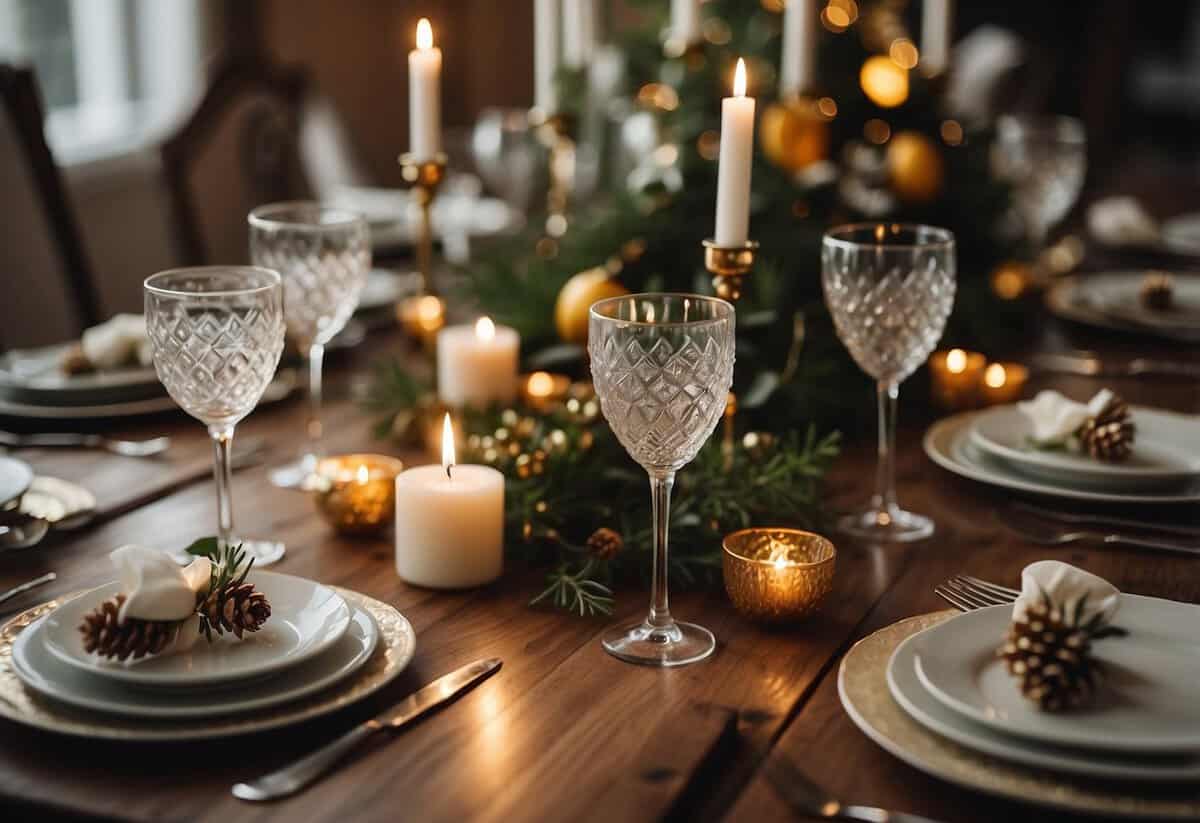Can You Throw Your Own Wedding? Tips for a Memorable DIY Celebration
Planning a wedding can be both exciting and overwhelming. You might be wondering if it’s possible to throw your own wedding. Yes, you can throw your own wedding, and many couples choose to do so for a more personalized and intimate experience.

Hosting a wedding at your home or another personal venue gives you greater control over the details. From the theme and decor to the guest list and menu, you can ensure that every aspect reflects your vision as the bride-to-be.
The wedding planning process involves a lot of logistics, but it allows you to tailor everything to your specific tastes and preferences. Make sure to keep communication open with your partner and enjoy the journey of planning your special day together.
Determining the Wedding Details
Planning your own wedding involves several important steps. Choosing the right date and location, setting a theme, preparing the guest list, and planning the menu are crucial for a smooth celebration.
Setting the Date and Location
Choosing a date is one of the first steps. Consider the season and any significant dates that are meaningful to you. Once you’ve settled on a date, think about the location. Do you want a traditional venue, or maybe your own backyard?
Keep logistics in mind. A backyard wedding offers a personal touch and can be more budget-friendly, but make sure to prepare for weather contingencies. Popular venues might require booking well in advance.
Choosing the Theme and Decorations
Having a theme can guide all your planning decisions. Whether it’s rustic, elegant, or beach-themed, a consistent theme helps in selecting decorations, colors, and attire.
Think about decorations early. You might choose string lights for a romantic feel, or wildflowers for a rustic vibe. Personalized details such as photos and hand-lettered signs can add unique touches that reflect your style.
Creating the Guest List
Deciding on your guest list is key. Start with your must-invites, like close family and friends, then consider others if space and budget permit. An intimate gathering may allow for more personalized details.
Keep track of RSVPs, and ensure you have contact details for everyone. Using an online platform can make managing your guest list simpler, helping you keep tabs on who’s coming.
Planning the Menu
Your menu should suit the theme and your guests’ tastes. For a formal event, a multi-course meal with menu booklets can add a touch of class. For a casual wedding, a buffet or barbecue in your backyard might be perfect.
Consider dietary restrictions and offer a variety of dishes. Hiring a caterer can simplify things, but if you’re DIY-ing, plan dishes that can be prepared in advance to minimize stress.
Budgeting for Your Wedding
Planning a wedding on a budget is more than just cutting costs; it’s about making smart decisions and allocating your funds wisely. Focus on what matters most to you and find creative ways to save money without compromising on your special day.
Allocating Funds
Setting your budget should be your first priority. Knowing how much money you have to work with helps you make better choices. Start by determining your total budget. Will you be covering most of the expenses, or are family members contributing?
Once you have a total amount, break it down into categories such as venue, catering, attire, and décor. Allocate a specific amount to each category. For example, if you have $10,000, you might allocate:
- Venue: $3,000
- Catering: $2,500
- Attire: $1,000
- Décor: $800
- Other expenses: $2,700
Breakdowns help you stay on track and avoid unexpected costs.
Budget-Friendly Tips
Consider a smaller guest list to reduce expenses. Inviting fewer guests means lower costs for food, drinks, and rentals. Instead of a formal dinner, you might opt for a brunch or afternoon tea, which can be less expensive.
DIY projects are another great way to save money. You can create your own decorations, invitations, and favors. For flowers, consider simple bouquets and arrangements that you can do yourself or with the help of friends.
Shop around for deals. Look for sales on wedding attire or consider renting instead of buying. Thrift stores or online marketplaces can also be great places to find unique items at a fraction of the cost.
Tracking Expenses
Keeping a close eye on your expenses is crucial. Use a spreadsheet or a budgeting app to track every purchase. List out all expected costs and update it regularly as you spend. Include all details, such as deposits and final payments, to make sure nothing is forgotten.
A table can help organize your budget:
| Category | Budgeted Amount | Actual Spent |
|---|---|---|
| Venue | $3,000 | $2,800 |
| Catering | $2,500 | $2,600 |
| Attire | $1,000 | $950 |
| Décor | $800 | $750 |
| Other | $2,700 | $2,900 |
Regular updates will help you stay within your budget and make adjustments as needed. This way, you can avoid money issues and ensure everything runs smoothly.
By being mindful and strategic, you can plan a beautiful wedding without breaking the bank.
The Role of Family and Friends

Including family and friends in your wedding planning strengthens relationships and provides valuable support. They can help you manage tasks and add personal touches to your special day.
Involving the Bridal Party
Your bridal party, including the maid of honor and bridesmaids, plays key roles in your wedding. The maid of honor often leads the effort, coordinating tasks and events like the bridal shower. Bridesmaids help with planning logistics and ensure everything runs smoothly on the wedding day. Their support is crucial in handling details like assembling invitations, organizing fittings, and providing emotional support throughout the process. By involving them, you ensure that your journey to the altar is a collective effort, filled with joy and shared memories.
Support from Family Members
Family members, such as your mother, sister, or future mother-in-law, can offer significant support. They may assist with important decisions, like choosing the venue or catering. Their experience and advice can be invaluable. Immediate family members can also help with more personal touches, like family traditions or heirlooms. Engaging them in the planning process not only lightens your load but also deepens familial bonds. Even small tasks, like helping with invitations or wedding favors, can be meaningful ways for them to contribute and feel involved.
Contributions from Friends
Friends outside the bridal party can also be vital. They can help with specific tasks, such as designing the wedding website, creating DIY decorations, or managing social media updates. Some might have special talents or skills, like photography, makeup, or floral arrangements, which can add a personalized touch to your wedding. Enlisting friends for these roles not only makes the planning process more fun but also allows you to showcase their unique contributions. Their involvement ensures your wedding day reflects the love and effort of your broader community.
By weaving in the efforts of your bridal party, family members, and friends, you create a wedding experience that is both communal and deeply personal.
Sending Invitations and Managing RSVPs
Sending invitations and managing RSVPs are crucial steps in planning your own wedding. It involves designing your invitations to suit your style and ensuring clear communication and follow-ups with guests.
Designing Invitations
Creating your own wedding invitations allows you to add a personal touch. First, decide on the design and theme that matches your wedding. Include essential details like the wedding venue, date, and time.
You might also want to add a URL or QR code for guests to RSVP online. Using platforms like Joy and The Knot makes it simple. These platforms let you manage RSVPs digitally, saving time and reducing errors. Paper invites are more traditional and can be paired with response cards for those who prefer a non-digital option. Including an RSVP due date ensures guests respond in a timely manner.
Communication and Follow-ups
Clear communication is key to managing RSVPs effectively. Include your contact information on invitations in case guests have questions. Regular follow-ups are necessary to ensure all guests respond by the deadline.
You can send gentle reminders via email, text, or even a phone call. Tools like WedSites and LoveStream provide ways to track responses and communicate with guests easily. For destination weddings, keep in mind that response rates might be lower, so adjust your guest list accordingly. Always have a plan for tracking who has RSVPed and who hasn’t, as it will help with planning the bridal shower guest list and finalizing arrangements.
Hosting Pre-Wedding Events

Hosting pre-wedding events adds a special touch to your celebrations. These events are a chance for you to connect with loved ones and enjoy some bonding time before the big day.
Organizing a Bridal Shower
A bridal shower is a fun pre-wedding event usually hosted by close friends or family members, but you can host your own shower if needed. Modern etiquette allows this, and you can get input from multiple hosts to plan a memorable day. Consider a ladies’ tea theme with cookies, cupcakes, and hot and cold teas.
If you prefer a low-key gathering, a spa day or a luncheon with games and gifts is a good choice. It’s important to follow traditional etiquette rules to ensure no one feels left out. Make a list of shower guests and don’t forget to plan some bridal shower games. These activities make the event engaging. Also, consider the timing; hosting around 6-8 weeks before the wedding is ideal.
Who pays is a common question, and it usually falls on the host, but multiple hosts can help share financial responsibility. A bridal shower is a great time for pre-wedding girl bonding, so make sure it’s enjoyable for everyone.
Planning the Rehearsal Dinner
The rehearsal dinner is typically hosted by the groom’s family, but hosting your own rehearsal dinner can be a good idea if circumstances call for it. A restaurant is a popular venue for an informal affair, but you can also host it at home for a personal touch.
If you choose a home setting, make sure to plan for both indoor and outdoor spaces. Have a Plan B in case of bad weather and consider lawn games for entertainment. A rice or ribbons theme can add a celebratory feel. Invite close family and friends as this event is more intimate.
Etiquette suggests inviting those participating in the rehearsal, but you can extend the invite to other significant guests. Plan the dinner for the evening before the wedding to give everyone a chance to relax and bond.


